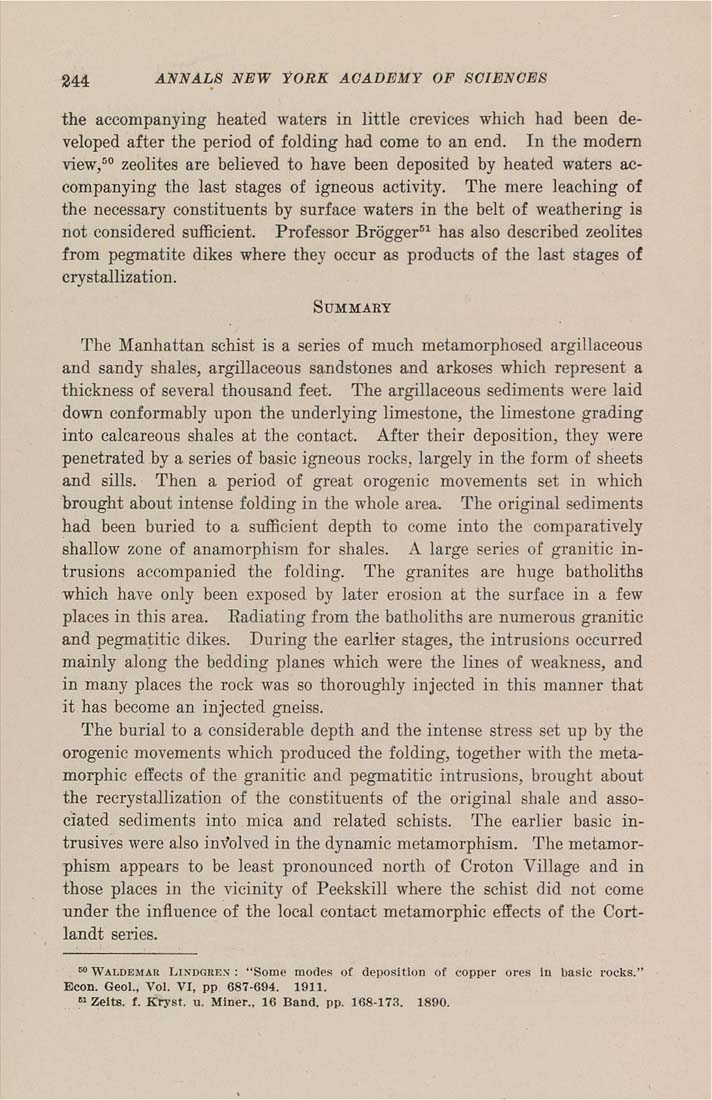344 ANNALS NEW YORK ACADEMY OF SCIENCES
the accompanying heated waters in little crevices which had been de¬
veloped after the period of folding had come to an end. In the modem
view,*^" zeolites are believed to have been deposited by heated waters ac¬
companying the last stages of igneous activity. The mere leaching of
the necessary constituents by surface waters in the belt of weathering is
not considered sufficient. Professor Brogger^^ has also described zeolites
from pegmatite dikes where they occur as products of the last stages of
crystallization.
Summary
The Manhattan schist is a series of much metamorphosed argillaceous
and sandy shales, argillaceous sandstones and arkose which represent a
thickness of several thousand feet. The argillaceous sediments were laid
down conformably upon the underlying limestone, the limestone grading
into calcareous shales at the contact. After their deposition, they were
penetrated by a series of basic igneous rocks, largely in the form of sheets
and sills. Then a period of great orogenic movements set in which
brought about intense folding in the whole area. The original sediments
had been buried to a sufficient depth to come into the comparatively
shallow zone of anamorphism for shales. A large series of granitic in¬
trusions accompanied the folding. The granites are huge batholiths
which have only been exposed by later erosion at the surface in a few
places in this area. Padiatiug from the batholiths are numerous granitic
and pegmatitic dikes. During the earlier stages, the intrusions occurred
mainly along the bedding planes which were the lines of weakness, and
in many places the rock was so thoroughly injected in this manner that
it has become an injected gneiss.
The burial to a considerable depth and the intense stress set up by the
orogenic movements which produced the folding, together with the meta¬
morphic effects of the granitic and pegmatitic intrusions, brought about
the recrystallization of the constituents of the original shale and asso¬
ciated sediments into mica and related schists. The earlier basic in¬
trusives were also inVolved in the dynamic metamorphism. The metamor¬
phism appears to be least pronounced north of Croton Village and in
those places in the vicinity of Peekskill where the schist did not come
under the influence of the local contact metamorphic effects of the Cort¬
landt series.
I
^° Waldemar I.indgrex : "Some modes of deposition of copper ores in
Econ. Geol., Vol. VI, pp 687-694. 1911.
" Zeits. f. Krj'st. u. Miner.. 16 Band. pp. 168-173, 1890.
|








